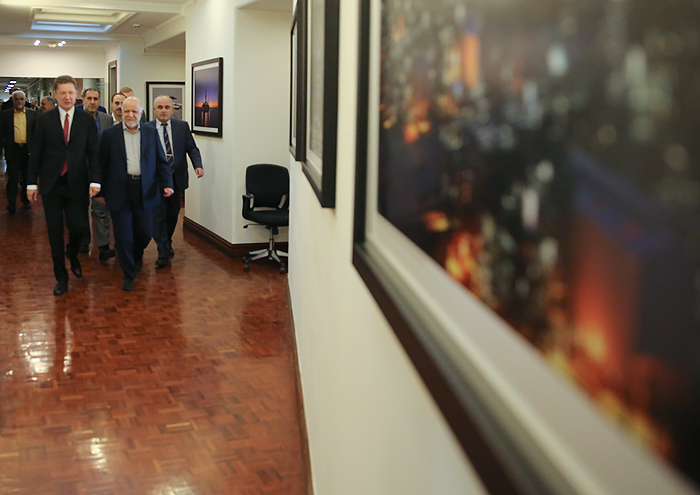When Iran was engaged in the eight-year imposed war, Qatar had awarded attractive contracts to international companies to recover gas and condensate from the gas field. That is why pressure fall-off is seen in the Iranian sector of South Pars. To resolve this problem, Iran has sought assistance from France's energy giant Total which plans to build offshore pressure booster platforms. Until that time, plans are under way to develop North Pars gas field. The CEO of Pars Oil and Gas Company (POGC), which operates the South Pars development, has announced that North Pars is planned to be developed only in the offshore sector.
The North Pars development bears significance because trading of gas, which is abundant in Iran, is among the important plans of the Iranian Ministry of Petroleum in coming years.
North Pars, which is situated 120 kilometers southeast of Bushehr Province at a depth of 3,500 meters and 10-15 kilometers away from land, holds more than 57 tcf of gas in place.
At an international conference in Tehran, Iran offered North Pars along with 50 others for development under the newly developed IPC model. The North Pars development is estimated to cost at least $16 billion, $5 billion for upstream sector and $11 billion for downstream sector (LNG plants).
The discovery of gas in North Pars dates back to 1963 when 3D seismic testing revealed this field. After that, six exploration, appraisal and development wells were expected to be drilled for the development of the field. In the years leading to the 1979 Islamic Revolution, Exxon and Lands were in charge of designing and building facilities for the North Pars development. These activities were halted in the aftermath of the 1979 Islamic Revolution.
At the time of exploration, North Pars was the largest proven gas reservoir in Iran and investment in it was done at high speech. But after the discovery of South Pars, North Pars became the second priority for investment. South Pars is in the final stages of development with domestic and foreign investment, and the time has come for the North Pars development.
Iran recently signed a memorandum of understanding (MOU) with major Russian companies to study 10 oil fields. The Russian side has agreed to present the findings of its studies on North Pars and other fields in the first quarter of 2018.
After signing an MOU with the National Iranian Oil Company (NIOC), CEO of Gazprom Alexey Miller said: "Today, an important step has been taken for gas cooperation with Iran."
Gazprom is the largest producer of natural gas in the world.
So far, 17 wells have been drilled at North Pars and 26 offshore platforms have been installed. However, production from this field has yet to start as the field remains untapped. The production capacity of North Pars equals that of four phases of South Pars. At least 46 wells are needed to be spudded in North Pars to supply 3,600 mcf/d of gas. This amount of gas could be produced from South Pars for 25 years. After that, the field would be able to produce gas for a decade. The recovery rate of the field is estimated at 61%. The North Pars gas would be used to feed gas refineries in South Pars.
A senior Iranian oil official recently said that financing and hiring new workforce would constitute Iran's post-sanctions priorities. The development of South Pars is envisaged in four phases, each with an output of 1.2 bcf/d. The output from all four phases would be 4.8 bcf/d.
Courtesy of Iran Petroleum


Your Comment